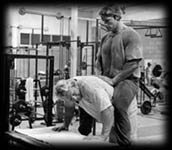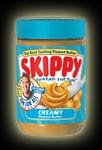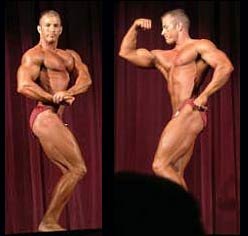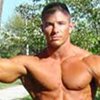BODYBUILDING AS ART
Bodybuilding is much more than massive men and women standing in front of a crowd flexing and posing. The human body is perhaps one of the most impressive and difficult to modify structures found in nature. It is much simpler to grab a brush and canvas and create a portrait of a landscape or an animal than bodybuild. In bodybuilding you have to grab a dumbbell and a bench and go to work. It's not an art form that takes place over the period of a week or month. It is a continual process encompassing 24-hour days for months and years. 
Have you ever seen George Butler's photographs of Arnold Schwarzenegger? This pictorial collection makes it apparent that bodybuilding represents an art form. He presents Arnold's perfectly sculpted body along side bodies of water, elderly women, and against walls of ivy. This is one of the most perfect forms of art: human accomplishment.
For those of you who have competed in a bodybuilding competition, you will know how difficult it is to prepare your body for a show. Most people spend around 12 weeks preparing their bodies. Hours are spent in the gym flexing and working the muscles in the exactly correct manner to make them grow. They have to grow in the right direction and in the correct proportion, too. Similar to engineering, you have to provide the structure with a stable and proper foundation to maintain over time. One has to make certain that their calves are in proper alignment with their quads and that they are in a correct proportion and symmetrical between sides. From there you taper up to an almost non-existent waist that, when correctly displayed, appears to vanish with the right twist. Next you have the abdominals which must have just the right amount of separation. If they are too far apart it counts against you. If there is not adequate separation you have to get back on the treadmill and lose some water weight.
After the abs you have the back muscles that can be seen from all angles. The back has to be displayed not only from a rear-facing position but also from the front and side. Three dimensional qualities make a winning back. Depth. Width. Separation. All these properties have to be so obvious that judges can only ooh and aah.
 Don't forget the chest. It appears as large chunks of meat hanging from your clavicles. Here is where you have to be careful to make two different parts of a muscle look so refined and in sync that they flow while maintaining significant separation. Shoulders are next in line on the bodybuilder/artist's canvas. These have to appear as large boulders at the top of your arms. They need to be so big that they cast shadows over your fellow competitors.
Don't forget the chest. It appears as large chunks of meat hanging from your clavicles. Here is where you have to be careful to make two different parts of a muscle look so refined and in sync that they flow while maintaining significant separation. Shoulders are next in line on the bodybuilder/artist's canvas. These have to appear as large boulders at the top of your arms. They need to be so big that they cast shadows over your fellow competitors.
Once you have the foundation for your structure, you have to meticulously carve and etch in the marks that make this work of art unique. This is when you add in the muscle definition and separations of the muscles. You take your hammer and chisel and create deep and wide valleys between each muscle group large enough to redirect water.
Now add in vascularity just under the skin to make your layers look alive. These vessels prove to everyone that much work and sweat went into this sculpture. They show the blood flowing to each distal border of your body.
If you work hard enough and slave over your sculpture long enough you can create magical lines in the bellies of your muscles. Striations. Appearing as small lines within the body of the muscle, striations demonstrate one of the highest levels of definition and artistry possible in bodybuilding.
BODYBUILDING AS SCIENCE
Bodybuilding can easily be classified as a science. It involves experimentation, research, practice, and precision.
Experimentation in bodybuilding encompasses more than just use of anabolic substances. It involves modifying water consumption to prevent looking bloated while on stage. Bodybuilding involves experimenting with different over-the-counter supplements to find which ones work best for your body. It involves experimenting with tanning agents to find which one makes your body look the hardest. We experiment with drop sets, super sets, circuit training, and pyramids all in the hopes of gaining an edge on our opponents. It is a trial and error sport consisting of a great amount of error. Luckily, we are not experimenting with explosive liquids or we probably wouldn't last long in the sport.
Research is a key ingredient in bodybuilding as a science. You don't just go to the nutrition store and buy the first protein powder you find. Personally, I will take several different powders from various companies and compare quantity, amount of carbohydrates and proteins, and cost. This is a time consuming process as there are so many companies today. Use the Amazing Protein Finder to find the perfect protein to fit your needs! Research is also done on the magazine rack. We pull out the latest issue of a magazine and buy it with the promise of learning the newest and best exercises or supplements to make us "HUGE in 12 Weeks." We also do research by asking questions in the gym. We ask the big guy down by the 120-pound dumbbells what he takes to get big. We ask him what kind of workout he does to look the way he does. We do all of this in hopes that he doesn't squish our head for assuming he takes steroids.
Practice is perhaps one of the most important aspects of bodybuilding as a science. As we all know, there is not one program or "routine" out there that everyone will respond well to. A bodybuilder must spend time in the gym doing various types of workouts with different amounts of weights and repetitions. We practice posing in the mirror during contest preparation to find which angle makes our muscles look their best and which poses hide our weaknesses. We practice moving large amounts of weights in hopes of making our muscles get stronger. This is similar to a baseball pitcher practicing throwing a curve. He isn't going to pitch in a game and try out his 4-seamed fastball on the batter with a .450 batting average.
 Bodybuilding involves precision in that we must be precise in each movement we do as to prevent injury. Precision is involved in calculating calories, protein, and fat in our diets. We use precision especially when we are a week out of contest and determining how much water we can drink, when we need to eliminate it, and how many diuretics we can take before cramping uncontrollably. It's all about precision when we learn how far in the light we must stand to eliminate shadows so that all our muscles are displayed at their finest. For those of you who are like me, precision is definitely important when it comes to knowing how much peanut butter we can eat a week out of contest without getting fat (that's for you Jeremy!).
Bodybuilding involves precision in that we must be precise in each movement we do as to prevent injury. Precision is involved in calculating calories, protein, and fat in our diets. We use precision especially when we are a week out of contest and determining how much water we can drink, when we need to eliminate it, and how many diuretics we can take before cramping uncontrollably. It's all about precision when we learn how far in the light we must stand to eliminate shadows so that all our muscles are displayed at their finest. For those of you who are like me, precision is definitely important when it comes to knowing how much peanut butter we can eat a week out of contest without getting fat (that's for you Jeremy!).
Hopefully after reading this you will understand what I mean when bodybuilding is both an art and a science. It is no longer a sport for dumb muscle heads (not that it ever was) who just pump steroids into their bottoms. It is a sport that is won by those who are able to create the finest sculpture. It is a sport that is won by the scientist who puts the most effort into understanding what it takes to make the body respond in the most positive and productive way. Bodybuilding is for those of us who are willing to put forth the greatest amount of effort to achieve the highest level of success.

Thanks,
